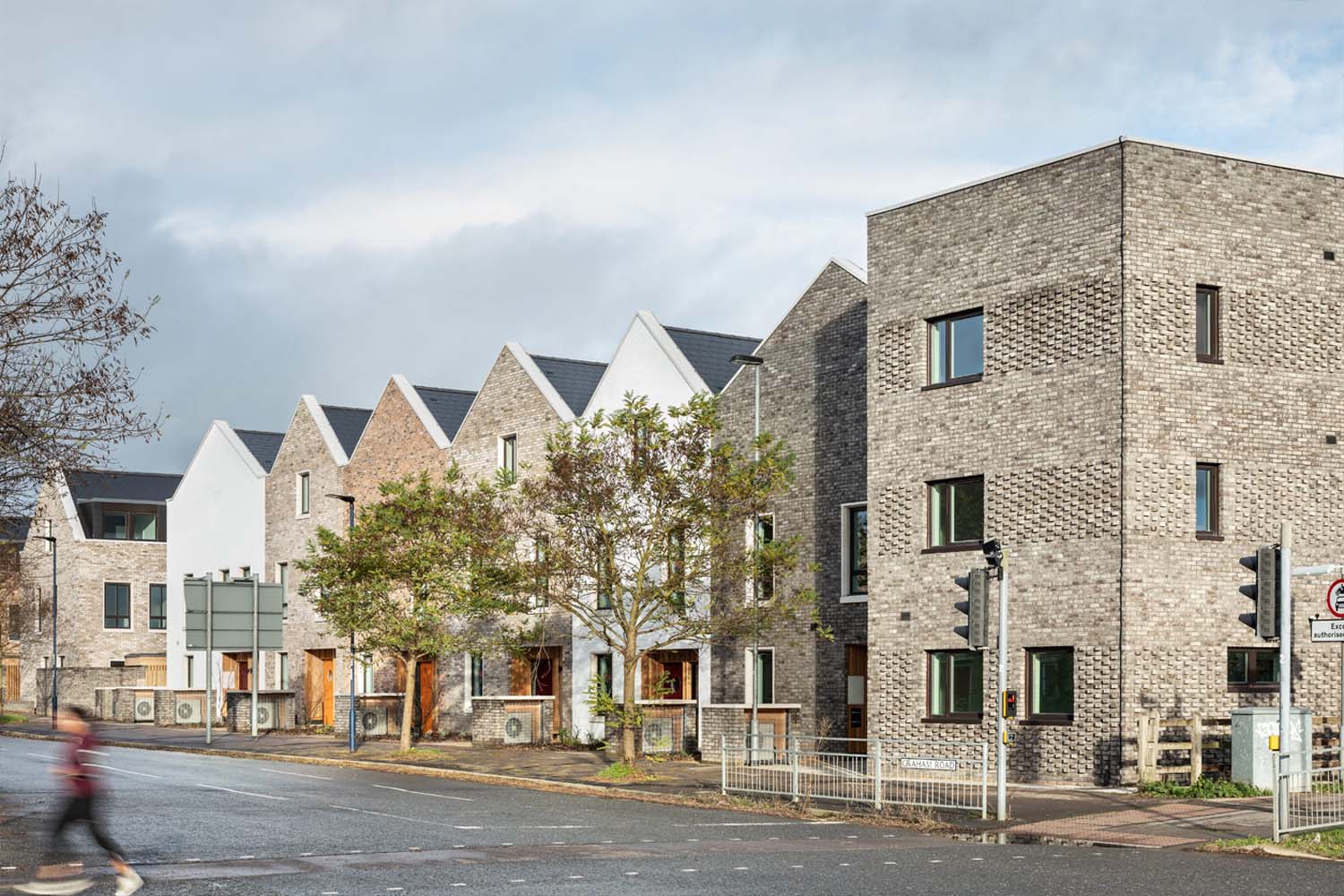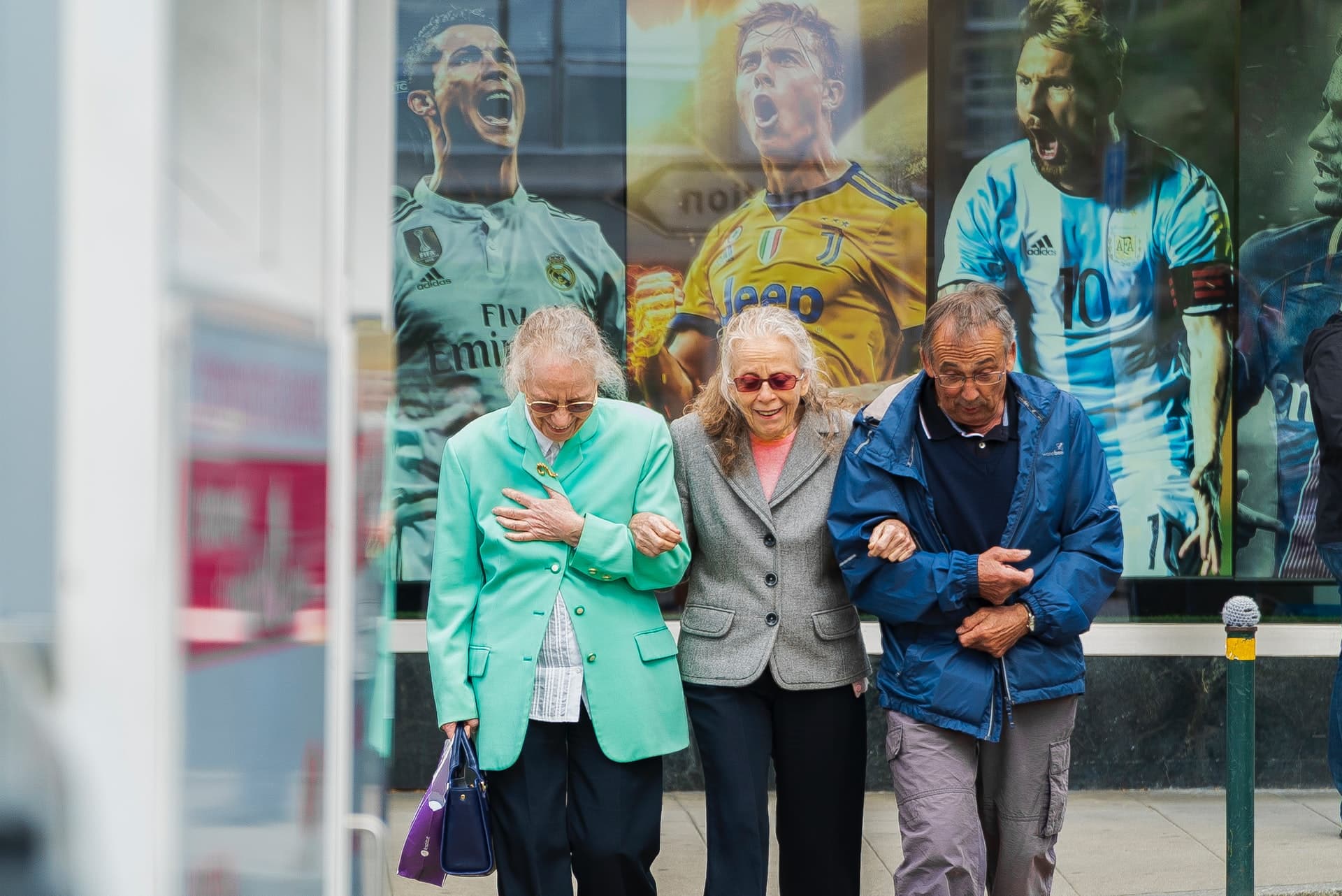Intergenerational housing
Examples of intergenerational living and housing options for the ageing population.

In our 'Ten principles of a caring place' report, we recognise the ageing population's needs at the heart of decision-making, service provision and investments for Scotland's town centres.
Written by authors from Housing Learning & Improvement Network (Housing LIN) for Architecture and Design Scotland, this report aims to provide our local authorities, designers, and community groups with a better understanding of what to include for intergenerational living and housing options.
What you can expect to learn
You can expect to find examples of intergenerational living and housing options from the UK and beyond. Real-life examples that have features and components applicable to the ‘Ten principles of a caring place’, and their applicability of achieving them in practice.
What's included on this page:

Framework for applicability to Scotland’s town centres
Housing LIN, in discussion with Architecture & Design Scotland, developed a ‘framework’ to identify features and components from the examples, that are applicable to Scotland’s town centres
Based on the varied case studies highlighted in the report, the following ‘themes’ emerge from the framework.
Image credits: Phillippe Leone on Unsplash
Product in this sense are features related to the housing offer. Based on the case studies below the following points are applicable to Scottish town centres.
- Offering a mix of housing types and styles will maximise appeal to different ages/generations
- Many examples can be scaled up and down to suit the location and siting, e.g., for urban infill development
- Designing and building to Housing our Ageing Population Panel for Innovation (HAPPI) design standards will maximise the appeal to older citizens as well as other generations
- There is an opportunity to maximise accessibility and ‘future proofing’ of the design, e.g., to Lifetime Homes standard to be ‘care ready’ if required by residents
- Promoting innovation in housing design can fill a ‘gap’ in the market, for example the multi-generation house
- Developing housing to be environmentally sustainable and energy efficient is potentially appealing to all generations
- Co-housing is a model that is suited to promoting an intergenerational approach
Services in this sense are features related to the use of the housing or building. Based on the case studies the following points are applicable to Scottish town centres.
- Maximise the potential for ground floor commercial and non-commercial use to encourage social interaction, community use and employment opportunities
- There is potential for younger people to be offered low or no cost housing in return for providing assistance to other residents, such as older people
- Consider the scope for integration of health and wellbeing services into town centre housing development
- There is potential to ‘mix up’ the services available on site, from providing a children’s play area to locating care services on site
- The co-housing model typically has a ‘common house’ to fulfil community use and promoting social interaction; this has potential validity for non co-housing models
- Consider the use of and potential for external and communal spaces to encourage exercise and wellbeing amongst all generations
- There is potential through design and landscaping to ‘link’ a town centre housing development into the existing public realm and amenities to appeal to all ages/generations
Feasibility in this sense is the extent of the applicability and deliverability in a Scottish town context. Based on the case studies the following points are applicable to Scottish town centres.
- Having a range of tenures will widen the appeal and has potential for cross subsidy of affordable housing units
- An affordable housing-based model of intergenerational housing will be applicable in many town centre contexts
- There is potential for Registered Social Landlords (RSLs) to be more proactive and innovative in developing intergenerational housing models subject to the availability of finance and suitable development opportunities in the marketplace
- There is potential for both repurposing existing redundant buildings and the opportunity to redevelop sites occupied by outdated sheltered and other age designated housing
- There is potential for intergenerational housing to form part of town centre regeneration schemes
- Some intergenerational housing models will be more feasible in larger and/or specific locations e.g., towns with a significant student population
- There is potential for private/social housing partnerships to develop intergenerational housing in mixed socio-economic contexts
Real-life examples of intergenerational housing
We’ve pulled out five examples to provide you with a snapshot of what you can expect from the report. For more examples of intergenerational living and housing options for the ageing population, download the report.

Parkside – Matlock, Derbyshire
A HAPPI (Housing our Ageing Population Panel for Innovation) award-winning four storey building of 10 two-bed, open market apartments located in the heart of Matlock. Its central location, off the High Street enroute to the town’s main green space, make it a natural location for ground floor mixed use, including a popular café.
The building enables residents to integrate with the surrounding community, instead of feeling isolated in an institutional setting.
Image © Copyright Evans Vettori Architects
Product
This is an urban infill development linking to a town centre thoroughfare and riverside walk. Consistent with HAPPI design principles.
Services
Community access to ground floor commercial space/café. Designed to be attractive to mixed age users; has been particularly attractive to older citizens.
Feasibility
A market sale offering that could be adapted to include a mix of tenures. A mixed tenure development offers potential for sales to part fund other, more affordable tenures.
A model that could be adopted by RSLs for a range of users. This can be applicable to a range of town centre/brownfield sites.

Castlemaine Court - Byfleet, Surrey
The development is designed to offer affordable, fully accessible, high-quality, multigenerational, sustainable one and two-bedroom homes for people of all ages.
The apartments allow single people, couples and families to be housed within one community with door widths and circulation spaces also allowing wheelchair access. Built to replace low-demand bedsit accommodation for older people.
Image © Copyright Archadia Architects
Product
This is a redevelopment of outdated sheltered/older person’s housing. An intergenerational housing product which offers attractive features to both older citizens and younger families.
The apartments are HAPPI design principles compliant and are designed to be highly accessible for people with disabilities.
Services
No specific intergenerational services, however, it does have circulation spaces designed to facilitate social interaction between residents.
Feasibility
An affordable social housing rental offer that could be applicable to a wide range of town centre settings. A housing model that could be adopted by Registered Social Landlords for a range of people.
Useful as an opportunity to showcase redevelopment of no longer ‘fit for purpose’ housing for older people.

Nathalie Salmon House (H.O.M.E.) - Chicago, Illinois, USA
In this development, lower income older people, young adults and families with children all live in the same building. Nathalie Salmon House is a five-story, 53-unit building built by the Housing Opportunities and Maintenance for the Elderly (H.O.M.E.) on the north side of Chicago.
Most of H.O.M.E.’s residents are ‘elder orphans’ without family and seek opportunities to socialize. All areas have full disabled access, and all the H.O.M.E. developments are located near shops and amenities.
Image © Copyright Rogers Park
Product
An affordable housing for rent offer aimed at older citizens with intergenerational elements including accommodation for younger families and student age younger people. Designed to be highly accessible for people with disabilities.
Services
Shared facilities on the ground floor include a kitchen, a community room, a fitness area, a garden room and a library.
Feasibility
An affordable social housing rental offer that incorporates a no/low cost housing proposition for student residents in return for assistance to older residents. Likely to be most applicable in towns with universities/other types of larger colleges.
Potential for applicability in towns in rural locations for younger people working, for example, in agricultural jobs. Likely to need to be a RSL that applies this type of affordable housing model.
Would need consideration of tenure status and rights for student residents and the nature of agreements regarding provision of unpaid work/services.

Plaza de América - Alicante, Spain
In 2003, the Municipal Project for Intergenerational Housing and Community Services provided 244 affordable, intergenerational housing units in central urban areas of Alicante, including Plaza de América.
Younger residents informally agree to engage with four older residents regularly and participate in the community via an established program. The project has resulted in accessible housing with a friendly community, enabling older residents to maintain their independence and stay in their own homes as they age.
Image © Copyright World Habitat
Product
A large-scale affordable housing offer including properties specifically aimed at older citizens and younger people.
Services
Shared spaces include a TV and music room, workshop and games area, a reading and computer room and a terrace, solarium and laundry.
The building includes provision of non-commercial services, i.e., a community centre and a health centre.
Feasibility
Likely to be most applicable in a larger town setting with universities/other types of larger colleges. The building is part-financed by a public car park in the basement, offering an innovative funding stream but requiring sufficient usage.
Would need consideration of tenure status and rights for student residents and the nature of agreements regarding provision of unpaid work/services.

Drømmehagen, Drøbak, Norway
This scheme was developed to provide housing for the town’s growing older population. The design is consistent with the form, scale, texture and colour palette of the other existing buildings in the town.
Image © Copyright Haptic Architects
Product
New build housing offer aimed at older citizens. A town centre site designed to blend with existing architectural styles. Although housing older citizens, it is designed and located to ensure residents have access to a wide range of amenities, as well as opportunities to engage with the wider community of all ages.
Services
The complex has various communal areas to encourage as much interaction as possible between its older residents and the wider community, and to encourage physical activity among residents.
It is located adjacent to a range of shopping and leisure amenities with a communal courtyard to encourage social interaction. There is a health and wellbeing component, including design features that encourage walking and exercising.
Feasibility
Could be applicable to a range of Scottish town centre contexts/sites, potentially as part of wider regeneration schemes. Potential to scale down for smaller town settings/sites. Potential for a range of tenures and delivery by a mix of housing providers.
For RSLs this may present an opportunity to rethink the use of sites that are centrally located in towns that are currently occupied by potentially outdated age-designated/sheltered housing.
Header image credit: David Butler
Developing town centres for the ageing population
At Architecture and Design Scotland, we inspire and support all those involved in designing and shaping our places. We can provide you with relevant learning resources and case studies to help you get started on your journey to a caring place.
